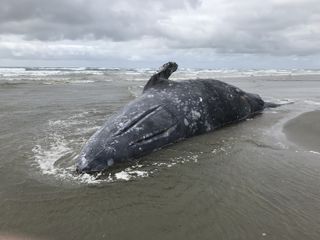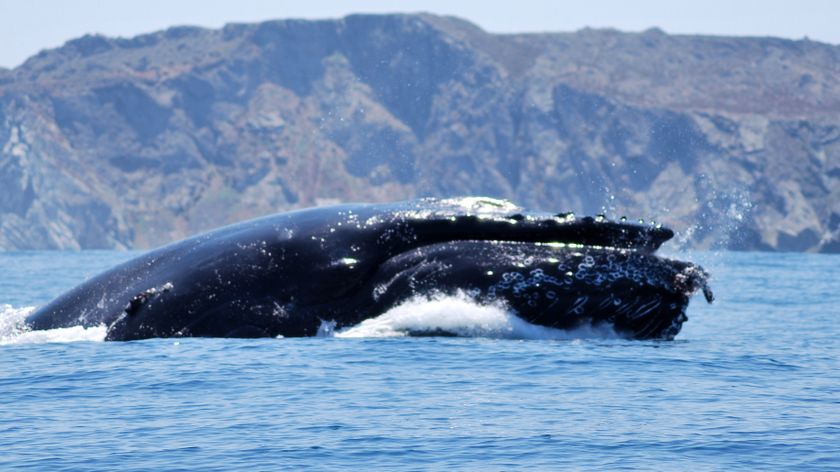More Than 70 Gray Whales Dead in 6 Months, and Scientists Don't Understand Why
Since January, more than 70 dead gray whales have washed up on the coasts of California, Oregon, Washington, Alaska and Canada. That's the most in a single year since 2000, and scientists are concerned.
Last week, the National Oceanic and Atmospheric Administration (NOAA) Fisheries designated these strandings as part of an Unusual Mortality Event (UME). Under the U.S. Marine Mammal Protection Act, the designation of a UME means that more resources and scientific expertise will be dedicated to investigating what's causing so many whales to die.
Seeing numerous gray whales (Eschrichtius robustus) swimming along the west coast this time of year is expected. From about March to June, these large marine mammals swim north from the coast of Baja California, Mexico, to the cool, food-rich waters of the Bering and Chukchi seas, north of Alaska. They'll start their return trip south in November. [Whale Photos: Giants of the Deep]
So far this year, 73 dead whales have been spotted on West Coast beaches: 37 in California; three in Oregon; 25 in Washington; three in Alaska; and five in British Columbia, Canada. Most of them were skinny and malnourished, which suggests they probably didn't get enough to eat during their last feeding season in the Arctic, said Michael Milstein, a NOAA Fisheries public affairs officer.

The condition of the dead whales also suggests there are many that scientists aren't counting because emaciated whales tend to sink, said John Calambokidis, a research biologist with Cascadia Research Collective. "So, the numbers that actually wash up do represent a fraction of the true number," he said. "Some estimates suggest it's as few as 10%."
These gentle giants were once severely threatened by whalers. There were only around 2,000 of them left in 1946, when an international agreement to stop gray whale hunting was initiated to help the population recover, according to The Marine Mammal Center, a nonprofit organization that rescues and rehabilitates marine mammals in California. Gray whales were removed from the U.S. Endangered Species List in 1994, when the population was estimated to be about 20,000.
A previous UME from 1999 to 2000 knocked out this population, called the Eastern North Pacific population, to about 16,000 individuals, but the whales have since recovered. In 2016, scientists estimated there were about 27,000.
Sign up for the Live Science daily newsletter now
Get the world’s most fascinating discoveries delivered straight to your inbox.
"We know from past data that this population is capable of rebounding from a loss on the order of at least 6,000, perhaps," said David Weller, a research wildlife biologist with the NOAA Southwest Fisheries Science Center. But it's still unclear what's causing so many whales to die. So for now, the priority is to learn as much as possible from the stranded animals, Weller said. "We've got our finger on the pulse and I would say that we want to continue to monitor it closely."
- Images: Sharks & Whales from Above
- Deep Blue Sea: Winning Underwater Photographs
- Quest for Survival: Photos of Incredible Animal Migrations
Originally published on Live Science.

Kimberly has a bachelor's degree in marine biology from Texas A&M University, a master's degree in biology from Southeastern Louisiana University and a graduate certificate in science communication from the University of California, Santa Cruz. She is a former reference editor for Live Science and Space.com. Her work has appeared in Inside Science, News from Science, the San Jose Mercury and others. Her favorite stories include those about animals and obscurities. A Texas native, Kim now lives in a California redwood forest.











